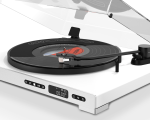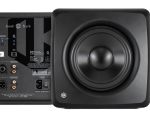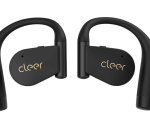Admit it, the sleeper hit of Apple‘s big Glowtime event in Cupertino on Monday was not the iPhone 16‘s Camera Control button, it was AirPods Pro 2‘s new clinical-grade, over-the-counter (OTC) hearing aid technology – in a trio of new features coming to your AirPods Pro 2. That was the moment I heard audible shock and unbridled applause, anyway.
I have been accused in my home of having poor hearing. My hearing, as far as I know, is fine, I just have a focus problem. Maybe. In truth, I haven’t been tested since I was a child. Now that I’ve reached a certain milestone age, most healthcare professionals recommend I have my ears tested at least every couple of years, if not more often. In the very near future, I might use my AirPods Pro 2 Bluetooth earbuds to test my hearing and then use them to adjust the sounds I hear based on the results.
Glowtime was the moment when your best earbuds officially transformed from your go-to music and podcast delivery device to an in-ear health system. The future updates, which include hearing protection, hearing loss, and hearing assistance are not surprising coming from Apple. A decade after Apple introduced its original wearable, the Apple Watch has transformed from a smartwatch that could ably deliver news, info, notifications, and support some exercise tracking to a full-blown health tracker (note the sleep apnea update). It’s no wonder Apple’s AirPods Pro 2 is on the same path.
These clinical-grade hearing tests and OTC hearing aid technology are not, interestingly enough, arriving on the new AirPods 4. The tests require the true seal of the AirPods Pro 2, which is now two years old but still capable of supporting Apple’s innovative hearing assistance technology.
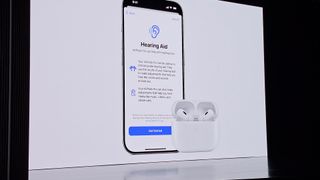
Since the company is still working on gathering FDA approval for the hearing test and OTC hearing aid feature, this update isn’t expected immediately. However, when it does gain approval, the hearing test and hearing aid will arrive in over 100 countries and regions (hearing protection will initially only be available in the US and Canada).
Apple’s approach to hearing health is pretty much the same as your doctor’s: first test and then offer adjustments through in-ear technology. I got a chance to experience the hearing test, or at least a beta of the test, which requires AirPods Pro 2 and an updated iPhone or iPad.
The test will live under AirPods Pro control in settings on an iPhone or iPad. The software walks you through the process of first making sure that you have a proper fit on your AirPods Pro 2. If the earbuds are constantly falling out of your ears, that fit is not snug enough. Each pair of buds ships with a few different tip sizes. The app will play a tone that you hear and then tell you if your fit and seal are good enough to take the hearing test.
This being a demo, my fit test was good. Next, I started the hearing test. It immediately took me back to my childhood where a doctor put big earphones over my ears and told me to raise my hand when I heard a tone. I remember being nervous about what would happen if he played a tone and I failed to raise my hand.
In the app, a series of high-pitched tones played and I tapped the screen for each one I heard. Since this was a canned demo, my results, which appeared in seconds, told me I had moderate hearing loss. It was represented in left and right ear measurements that showed 41dbHL and 44 dbHL, respectively.
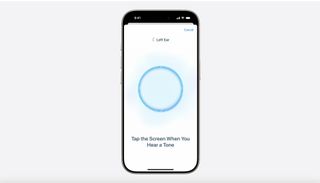
The app offers to link you to additional reading material about hearing loss or use the results to build a personal hearing profile that lives only on your devices but is shared across those you’ve signed into with your Apple account. This means that any Apple device you listen to will adjust to tones that make it possible for you to hear properly. You can aslso share the profile with your doctor.
If your hearing loss is progressive, you might take another test a year later and, if the results are different, Apple will update the hearing profile.
The work Apple does in the AirPods to adjust for hearing loss does not impact battery life, by the way, mainly because it’s really just adjusting various features it already uses, like ANC, and transparency mode to support your hearing profile settings.
That said, AirPods 2 might have just 5 hours of battery life (up to 30 with the case). A traditional hearing aid could last up to 10 days. Of course, Apple isn’t trying to replace prescribed hearing aids. The focus here is on moderate hearing loss, much of which goes untreated (undiagnosed, too expensive, the person doesn’t want to go to a doctor to take a test).
I have no idea if I have hearing loss (my family is reading this right now shaking their heads in dismay) but I look forward to taking the test and knowing for sure. Perhaps I will start wearing my AirPods Pro 2s as OTC hearing aids and no one, not even my family, will be the wiser.


